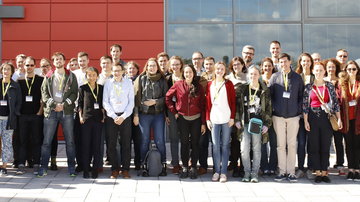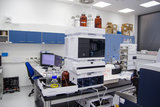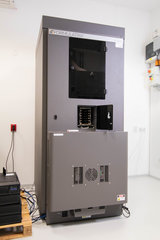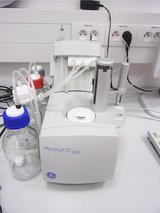O nás
Centrum molekulární struktury (CMS) sdružuje několik laboratoří poskytujících komplexní přístup ke studiu prostorové struktury, funkce a biofyzikálních vlastností biologických molekul. Společně s centrálními laboratořemi centra CEITEC je CMS sdruženo do České infrastruktury pro integrativní strukturní biologii (CIISB) - přidruženého národního centra Evropského strategického fóra pro výzkumné infrastruktury Instruct (ESFRI; European infrastructure for structural biology Instruct). CMS je zároveň součástí evropské infrastruktury pro molekulární biofyziku MOSBRI. CMS nabízí služby v režimu Open Access pro interní uživatele z BTÚ, pro ostatní akademické pracovníky a pro zákazníky z oblasti průmyslu. Servisní pracoviště školí české a zahraniční studenty a mladé vědce formou různých workshopů po celý rok.
Servisní pracoviště Biofyzikální metody
Servisní pracoviště Biofyzikální metody umožňuje stanovení kvality, stability a interakčních vlastností stovek biomolekulárních vzorků v rámci mnoha strukturně-biologických projektů, ať už v rámci běžné kontroly kvality, detailní analýzy vlastností nebo optimalizace molekulárních konstruktů či pracovních protokolů.
Servisní pracoviště Krystalizace proteinů a nukleových kyselin
Servisní pracoviště Krystalizace proteinů a nukleových kyselin umožňuje uskutečnění tisíců krystalizačních pokusů za použití robotického nebo manuálního nasazování, automatický monitoring růstu krystalů, experimenty za zvolených teplot nebo za definovaných podmínek, za účelem přípravy vzorků k dalším krystalografickým studiím.
Servisní pracoviště Difrakční techniky
Servisní pracoviště Difrakční techniky se věnuje difrakční analyze a nabízí ověřování kvality krystalů, testování krystalů in situ, sběr a zpracování difrakčních dat z monokrystalů, měření maloúhlové difrakce (SAXS) s robotických nasazením vzorku a online UV-VIS detekcí, a zpracování dat ze SAXSu. Za rok jsou zpracovány stovky vzorků buď samotnými uživately nebo za pomoci našich zaměstnanců.
Servisní pracoviště Hmotnostní spektrometrie
Servisní pracoviště Hmotnostní spektrometrie poskytuje analýzu stovek vzorků a podporuje mnoho interních a externich strukturně-biologických projektů. Hlavním zaměřením služeb je monitorováni strukturních změn proteinů a protein-proteinové interakce pomocí chemického zesíťování a vodík-deuteriové výměny.
Servisní pracoviště Produkce proteinů
Servisní pracoviště Produkce proteinů poskytuje služby pokrývající klonování DNA a přípravu DNA plazmidů, expresi proteinů v expresních systémech bakterií E. coli a purifikaci rekombinantních proteinů. Naše služby mohou zahrnovat i optimalizaci expresních a purifikačních protokolů, ověřování identity a čistoty produkovaných proteinů a měření jejich koncentrací.
Způsoby přihlášení projektu
CIISB - Hlavní způsob podávání projektů
Instruct-ERIC - Evropská infrastruktura pro strukturní biologii. Poskytuje zároveň přístup do dalších center. Financování pokrývá náklady na experimenty i cestování.
MOSBRI - Evropská infrastruktura pro molekulární biologii. Pouze pro přístup zahraničních uživatelů. Vědci z ČR mohou využít pro přístop k technologiim v jiných evropských centrech.
Pro více informací navštivte web CMS.

























































